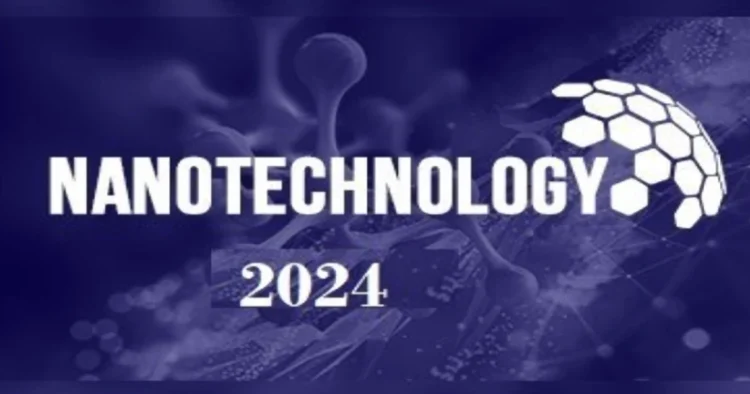Nanotechnology is a fascinating field that operates at the atomic or molecular scale, allowing scientists and engineers to manipulate matter in ways that were once unimaginable. Nanotechnology involves engineering materials and structures at the nanoscale, which typically ranges from 1 to 100 nanometers (nm). The term “nano” comes from the Greek word “Nanos,” meaning “dwarf” or something extremely small. To put it in perspective: “A nanometer (nm) is one billionth of a meter”. Nanotechnology enables us to design novel structures, materials, and devices that thrive at these tiny dimensions.
Why Is Nanoscale Relevant in today’s era?
In the 20th century, researchers discovered that materials with at least one facet in the 1 to 100 nm range exhibit distinct physical and chemical properties compared to the same materials at larger scales. For example, consider silver: When broken down into smaller proportions, each piece retains basic properties like density, texture, and boiling point. However, these properties change at the nanoscale based on size, shape, and composition. Nanoscale materials open up new possibilities in fields such as medicine, manufacturing, energy, and materials science.
Some Applications and Use Cases
Medicine: Nanotechnology plays a role in drug delivery, imaging, and diagnostics. Nanoparticles can target specific cells or tissues.
- Electronics: Smaller, more efficient components can be created using nanoscale materials
- Materials Science: Nanocomposites enhance material properties (e.g., strength, conductivity)
- Energy: Nanotech improves solar cells, batteries, and energy storage
- Environmental Remediation: Nanoparticles can remove pollutants from water and soil
- Consumer Products: Sunscreens, stain-resistant fabrics, and antimicrobial coatings utilize nanotechnology
Remember, nanotechnology isn’t just about shrinking things—it’s about unlocking new capabilities by thinking small!
Nanotechnology: A realm where science dances with the infinitesimal, and innovation defies the boundaries of scale. As we peer into the near-future horizon, we glimpse a world transformed by the convergence of atoms and ambition. By 2024, nanotech will cease to be a whisper—it will resonate through our lives, from medicine to manufacturing.
Carbon nanomaterials, those minuscule wonders, promise strength beyond steel and conductivity beyond imagination. Semiconductor devices, now etched at the quantum level, herald faster computation and smarter communication. Sustainability takes center stage with green nanotechnology—where eco-friendly solutions emerge from the tiniest particles. And let’s not forget nanosensors—those silent sentinels—monitoring our health, detecting diseases before symptoms even stir. So, buckle up for a nano-revolution, where ethics and exploration intertwine, and the future unfolds in atomic precision.
Before we deep down into the trends for 2024 and beyond, let’s explore “the future of Nanotechnology in 2024“. In the near future, nanotechnology is poised to revolutionize various aspects of our lives.
Here are some key areas where we can expect significant advancements
Healthcare and Medicine
- Targeted Drug Delivery: Nanoparticles will transport drugs precisely to affected cells, minimizing side effects
- Personalized Medicine: Customized treatments based on an individual’s genetic makeup will become more common
- Regenerative Medicine: Nanomaterials will aid tissue repair and regeneration
- Diagnostic Nanosensors: Early disease detection using nanoscale sensors
Energy and Environment
- Efficient Solar Cells: Nanomaterials will enhance solar energy conversion
- Energy Storage: Improved batteries and supercapacitors
- Water Purification: Nanoparticles will remove pollutants from water
- Materials: Nanocomposites for fuel-efficient vehicles and aircraft
Electronics and Computing
- Quantum Computing: Nanoscale quantum devices will revolutionize computation
- Flexible Electronics: Bendable displays, wearable devices, and rollable screens
- Nanoelectronics: Smaller, faster transistors and memory devices
Materials Science
- Stronger Materials: Nanocomposites with exceptional strength and durability
- Self-Healing Materials: Nanoparticles repairing cracks and damage
- Smart Coatings: Nanofilms for anti-reflective, self-cleaning, and protective surfaces
Environmental Sensing and Monitoring
- Nano sensors: Detecting pollutants, monitoring air quality, and tracking environmental changes
- Precision Agriculture: Nanotech-enabled sensors optimizing crop growth
Space Exploration and Aerospace
- Lightweight Components: Nanomaterials reduce weight in spacecraft and satellites
- Radiation Shielding: Nanoparticles protecting astronauts from cosmic radiation
Consumer Products
- Nano-Enhanced Fabrics: Stain-resistant, UV-blocking, and antimicrobial textiles
- Cosmetics: Nanoparticles for better sunscreens and skincare products
- Food Safety: Nanoscale sensors ensuring food quality and safety
Ethical and Safety Considerations
As nanotechnology advances, ethical discussions around privacy, safety, and unintended consequences will intensify. Responsible development and regulation are crucial Remember, the future of nanotechnology holds immense promise, but it also requires responsible stewardship to ensure its positive impact on society!
Now, let’s explore the exciting trends in nanotechnology for 2024 and beyond.
Carbon Nanomaterials: Startups are continuously developing new methods and improving conventional techniques, such as carbon-vapor deposition (CVD), to synthesize carbon nanomaterials. These materials have remarkable properties, including high strength, electrical conductivity, and thermal stability. Applications range from lightweight composites to energy storage devices and even biomedical sensors.
Semiconductor Nanodevices: Nanotechnology is revolutionizing semiconductor devices. Smaller, more efficient transistors and memory cells are being developed, enabling faster computing and communication. Quantum dots and nanowires are at the forefront of this trend .
Green Nanotechnology: Sustainability is a key focus. Green nanotech aims to create environmentally friendly solutions. Examples include nanocatalysts for cleaner chemical processes and nanomaterials for efficient solar cells.
Nanocomposites: These are hybrid materials combining nanoparticles with traditional materials. Nanocomposites enhance properties like strength, thermal conductivity, and corrosion resistance. Applications span aerospace, automotive, and construction industries .
Nanosensors: Nanosensors detect and respond to specific molecules or physical changes. They find use in healthcare, environmental monitoring, and security i.e., wearable health trackers with nanosensors for real-time health data.
Nanofilms: Startups are developing thin nanofilms for versatile applications. These films enhance surfaces, improve barrier properties, and enable novel functionalities. Examples: flexible displays, anti-reflective coatings, and protective layers.
Nanoencapsulation: Nanoparticles are used to encapsulate drugs, nutrients, or other substances. Controlled release systems improve drug delivery and enhance bioavailability. Precision medicine benefits from nanoencapsulation.
Energy Nanomaterials: Nanotech contributes to energy storage, conversion, and efficiency. From better batteries to advanced solar panels, nanomaterials play a crucial role.
Computational Nanotechnology: Simulations and modeling guide intelligent nanoparticle design. Researchers are optimizing structures and predicting behavior using computational tools.
Nanobots and Nanomedicine: Nanobots are tiny robots designed to perform specific tasks at the nanoscale. In medicine, they can deliver drugs precisely to targeted cells, diagnose diseases, and even repair damaged tissues. For e.g. a fleet of nanobots navigating through our bloodstream, repairing arteries or fighting cancer cells
Quantum Nanotechnology: Quantum phenomena become prominent at the nanoscale. Researchers are exploring quantum dots, spintronics, and quantum computing. Quantum dots, for instance, emit specific colors of light based on their size, revolutionizing displays and lighting.
DNA Nanotechnology: DNA molecules can be engineered to self-assemble into intricate structures. Applications include drug delivery, biosensors, and even creating nanoscale machines. For e.g. DNA origami constructing nanoscale shapes.
Nanophotonics: Nanoscale optical devices manipulate light in novel ways. Applications range from ultrafast data transmission to efficient solar cells. Plasmonic nanoparticles enhance light-matter interactions.
Nanoelectromechanical Systems (NEMS): NEMS involve tiny mechanical devices integrated with electronics. Examples include nanoscale sensors, switches, and resonators. NEMS bridge the gap between microelectronics and macroscopic mechanical systems.
Bio-inspired Nanomaterials: Nature also provides inspiration for nanotech. Researchers are mimicking structures like lotus leaves (for water-repellent surfaces) or gecko feet (for strong adhesion). These materials find applications in coatings, textiles, and medical devices.
Nanowires and Nanotubes: Nanowires and nanotubes exhibit unique electrical and mechanical properties. They’re used in transistors, batteries, and flexible electronics. For e.g. wearable devices woven with nanowires.
Nanoplasmonics: Plasmonic nanoparticles interact with light waves. They enhance sensitivity in biosensors, improve imaging, and enable efficient energy conversion. Gold nanoparticles, for instance, resonate with specific wavelengths.
Nanomanufacturing and 3D Printing: Nanoscale 3D printing allows precise fabrication of intricate structures. Customized implants, microfluidic devices, and nanosensors benefit from this technology. Nanomanufacturing ensures scalability and reproducibility.
Materials by Design: Nanotechnology allows us to design materials atom by atom. Self-healing materials that repair themselves when damaged, super hydrophobic surfaces, and smart coatings are on the horizon. These materials will find applications in everything from infrastructure to consumer goods.
In summary, the future of nanotechnology is a canvas awaiting bold strokes—a fusion of science, creativity, and societal responsibility and is poised to transform various industries, from healthcare to manufacturing. Keep an eye on these trends—they’re shaping our future! Brace yourselves for a nano-revolution!
In the delicate dance of atoms, nanotechnology emerges as our silent partner—a realm where size is no barrier to impact. As we gaze into the near-future tapestry, we see threads of carbon nanotubes weaving strength, quantum dots painting luminescent possibilities, and nanosensors whispering health secrets. The canvas of nanotechnology stretches beyond laboratories—it touches medicine, energy, and the very fabric of our existence. But let us tread with reverence, for every breakthrough carries ethical footprints. As we step into this nano-revolution, let curiosity guide us, responsibility steer us, and wonder propel us toward a future where the small becomes mighty, and the invisible shapes our world.




















Comments